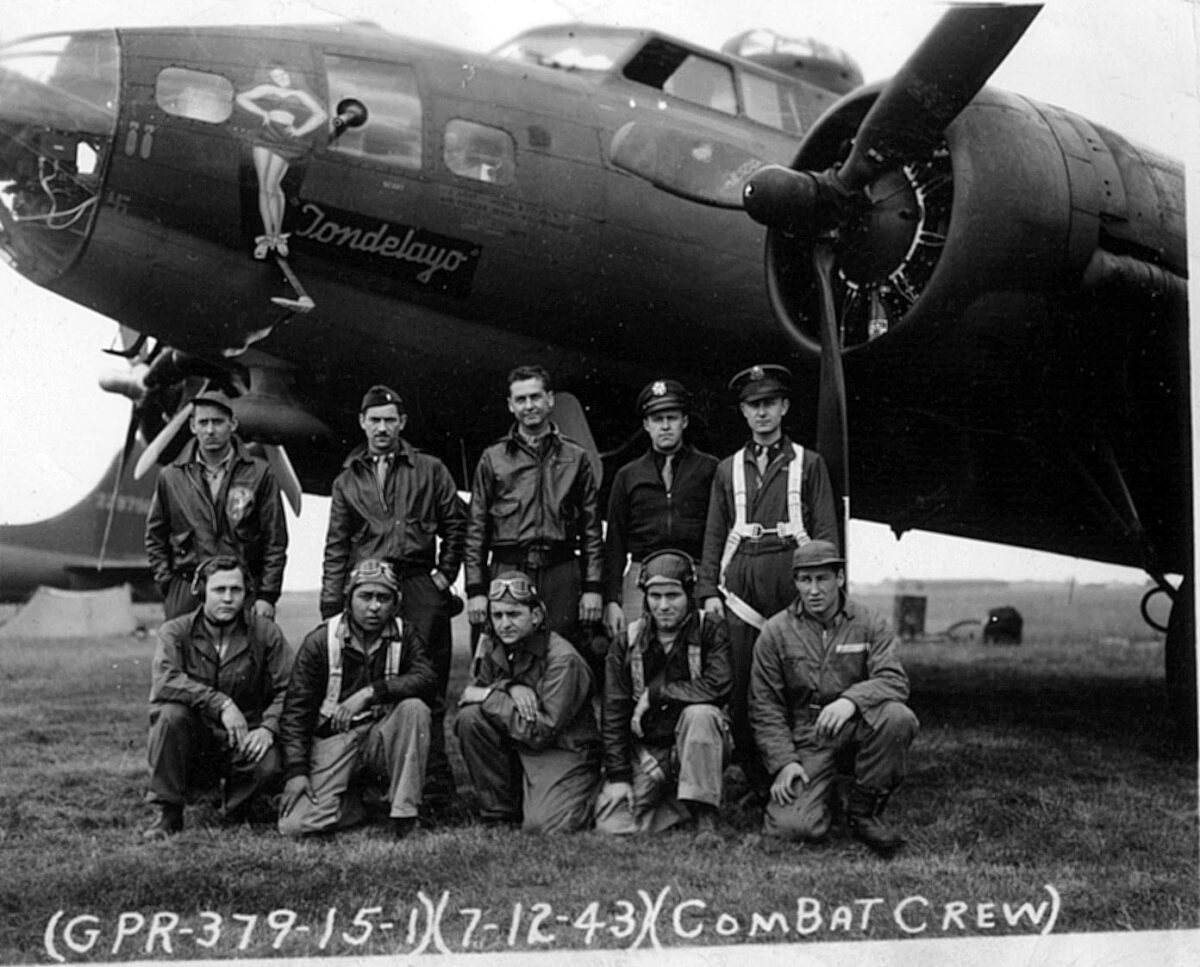“The ‘Tondelayo’ was being knocked about the sky … climbing, diving and making corkscrew patterns in a crazy choreography designed to unsettle the fighters, who were pressing in from all sides,” according to an account by Elmer “Benny” Bendiner, the B-17′s bombardier, in his wartime postscript, “The Fall of Fortresses.”
It was July 30, 1943, and the primary targets of the 379th Bomb Group were the Nazi aero engine shops located in the central German town of Kassel.
Of course, B-17 bombing missions were no picnic. Aeronautical advancements at the time allowed a B-17 to fly at altitudes of approximately 35,000 feet for up to 2,800 miles, all while carrying a hefty bomb payload supplemented by 10 .50-caliber machine guns.
The bomber, however, flew at a speed of just 150 mph, which left crews immensely vulnerable when flying through swarms of the 400 mph-capable Messerschmitt and Focke-Wulf-190s. What’s more, it would not be until the routine implementation of the P-51 Mustang in 1944 Europe that B-17s would be regularly accompanied by fighter escorts.
In 1943, as casualty rates hovered around 30 percent, surviving the mandatory 25 missions as a crewman of a B-17 often came down to luck. The Kassel raid was no exception.
The Tondelayo and its crew weathered near constant attacks from Luftwaffe fighters, with Messerschmitt and Focke-Wulf-190s hedge-hopping from station to station to refuel along the bombers’ flight path — easy actions with nary an Allied fighter in sight.
From the skies, German fighters spit the Tondelayo with 20 mm explosive shells. From below, anti-aircraft flak peppered the flying coffin.
“I was undeniably alive in battle. … This was not the war of boredom and vermin we had read about in the tales of our fathers’ agony. This was a frenzy in which I heaved and sweated but could not stop because, shamefully, my guts loved what my head hated,” Bendiner noted about the constant proximity to death. “I exulted in that parade of Fortresses forming for battle. I confess this as an act of treason against the intellect, because I have seen dead men washed out of their turrets with a hose. But if one wants an intellectual view of war, one must ask someone who has not seen it.”
Throughout the war, B-17 crews became used to the all too frequent scene of adjacent bombers being hit and hurtling towards the earth. For the men of the Tondelayo, July 30 seemed like it would yield much of the same. But on that particular raid, the Tondelayo was afforded remarkable luck in the form of Czech prisoner of war sabotage. After losing both of the bomber’s waist gunners, Tondelayo crew members, upon successfully returning to England, discovered 11 unexploded 20 mm shells housed in the bomber’s gas tank. Such placement of explosives would normally spell out certain death for all on board, except for a “highly personal miracle,” Bendiner recalled.
In looking at the shells’ construction, the armorers found no explosives. Instead, the munitions were “clean as a whistle and as harmless,” Bendiner wrote. One shell, however, wasn’t quite empty.
Inside the casing was “a carefully rolled piece of paper” written in Czech, he noted.
“This is all we can do for you now,” the message read.
Ultimately, the Tondelayo’s luck would run out. She now sits somewhere on the bottom of the English Channel, a relic of sacrifice and sabotage.
Bendiner, meanwhile, retired from the service with a Distinguished Flying Cross, the Air Medal with three oak leaf clusters, and a Purple Heart. He authored numerous books after the war and worked as a journalist for Esquire.
Elmer Bendiner died in September 2001.

